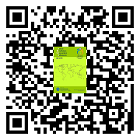Analisis Spasial Kejadian Demam Berdarah Dengue (DBD) di Kabupaten Bantul Tahun 2022
(1) Poltekkes Kemenkes Yogyakarta
(*) Corresponding Author
Abstract
Abstrak
Latar belakang: Kasus Demam Berdarah Dengue (DBD) di Daerah Istimewa Yogyakarta dari tahun ke tahun relatif tinggi terutama wilayah Kabupaten Bantul yang menjadi salah satu kabupaten dengan kasus DBD tertinggi di DIY. Penyakit DBD merupakan penyakit berbasis lingkungan yang penularanya dipengaruhi oleh kondisi lingkungan yang menyebabkan kasus ini menyebar luas dalam satu wilayah ke wilayah lainnya. Tujuan penelitian ini untuk mengetahui gambaran sebaran kejadian penyakit DBD dihubungkan dengan angka bebas jentik, kepadatan penduduk, dan tingkat curah hujan di Kabupaten Bantul tahun 2022 dengan sampel sebanyak 75 kalurahan. Metode: Metode penelitian ini menggunakan desain studi ekologis dengan pendekatan retrospektif. Data yang digunakan berupa data sekunder kasus DBD, kepadatan penduduk, angka bebas jentik dan tingkat curah hujan. Data dianalisis secara hotspot analysis dan autokorelasi spasial Indeks Moran dan LISA menggunakan Geoda 1.20. Hasil: Berdasarkan hasil penelitian dengan analisis hotspot daerah yang memiliki risiko kejadian dbd merupakan daerah yang memiliki IR yang tinggi. Analisis yang menunjukan pola spasial kejadian DBD di Kabupaten Bantul tahun 2022 mengelompok dengan adanya autokorelasi spasial. Analisis autokorelasi spasial dengan indeks moran menghasilkan hubungan spasial antara kejadian DBD dengan kepadatan penduduk. Analisis secara lokal menghasilkan hubungan spasial antara kejadian DBD dengan ABJ, kepadatan penduduk dan tingkat curah hujan. Kesimpulan: Kejadian penyakit DBD setiap kalurahan di Kabupaten Bantul tahun 2022 memiliki pola spasial mengelompok antar wilayah.
Abstract
Background: Cases of Dengue Fever Dengue (DHF) in the Special Region of Yogyakarta from year to year is relatively high, especially in the Bantul Regency which is one of the districts with the highest DHF cases in DIY. Dengue fever is an environment-based disease whose transmission is influenced by environmental conditions which causes this case to spread widely from one region to another. The purpose of this study was to describe the distribution of the incidence of DHF associated with larvae-free numbers, population density, and rainfall levels in Bantul Regency in 2022 with a sample of 75 sub-districts. Methods This research method uses an ecological study design with a retrospective approach. The data used are secondary data on DHF cases, population density, larvae free numbers and rainfall levels. Data were analysis using hotspot analysis and autocorrelation analysis with of Moran Index and LISA using Geoda 1.20. Results: Based on the results of the study by analysis hotspots, areas that have a high risk of dengue incidence are areas that have a high IR. The analysis shows the spatial pattern of DHF events in Bantul Regency in 2022 grouped with spatial autocorrelation. Spatial autocorrelation analysis with the moran index produces a spatial relationship between DHF incidence and population density. Local analysis yielded a spatial relationship between the incidence of DHF and ABJ, population density and rainfall levels.
Keywords
Full Text:
PDFReferences
WHO. Dengue and Severe dengue. World Health Organization, https://www.who.int/news-room/fact-sheets/detail/dengue-and-severe-dengue (2022, accessed 28 June 2022).
Kemenkes. Kasus DBD meningkat, Kemenkes Galakkan Gerakan 1 Rumah 1 Jumantik (G1R1J), https://www.kemkes.go.id/article/view/22061600001/kasus-dbd-meningkat-kemenkes-galakkan-gerakan-1-rumah-1-jumantik-g1r1j-.html (2022, accessed 30 November 2022).
Kemenkes RI. Profil Kesehatan Indonesia. 2021.
Mala S, Jat MK. Geographic information system based spatio-temporal dengue fever cluster analysis and mapping. Egypt J Remote Sens Sp Sci 2019; 22: 297–304.
Soontornpipit P, Viwatwongkasem C, Taratep C, et al. Development of the Electronic Surveillance Monitoring System on Web Applications. Procedia Comput Sci 2016; 86: 244–247.
BNBP. Kepala Badan Nasional Penanggulangan Bencana Tentang Daftar Isi Kepala Badan Nasional Penanggulangan Bencana Tahun 2012 Tentang Pedoman Umum Pengkajian Risiko 2 . Lampiran Peraturan.
Astuti SD, Rejeki DSS, Nurhayati S. Analisis Autokorelasi Spasial Kejadian Demam Berdarah Dengue (DBD) di Kabupaten Klaten Tahun 2020. J Vektor Penyakit 2022; 16: 23–32.
O SE de, C OY da, De AU, et al. Spatial Temporal Analysis of Mortality by Suicide Among The Elderly in Brazil. Rev Bras Geriatr Geriatr e Gerontol 2017; 20: 845–855.
Saputro D, Widyaningsih P, Kurdi NA. Local Indicator Of Spatial Association ( LISA ) Cluster Map untuk Identifikasi Penyebaran dan Pemetaan Penyakit Demam Berdarah Dengue ( Dbd ) di Jawa
Article Metrics
Abstract view : 1625 timesPDF - 680 times
DOI: https://doi.org/10.26714/jkmi.18.4.2023.27-33
Refbacks
- There are currently no refbacks.
Copyright (c) 2024 Jurnal Kesehatan Masyarakat Indonesia

This work is licensed under a Creative Commons Attribution-NonCommercial-NoDerivatives 4.0 International License.
------------------------------------------------------------------------------------------------------------------------------------------------------------------------------------
 | Jurnal Kesehatan Masyarakat Indonesia ISSN 1693-3443 (print) | 2613-9219 (online) |
Jurnal Kesehatan Masyarakat Indonesia is licensed under a Creative Commons Attribution-NonCommercial-NoDerivatives 4.0 International License.












